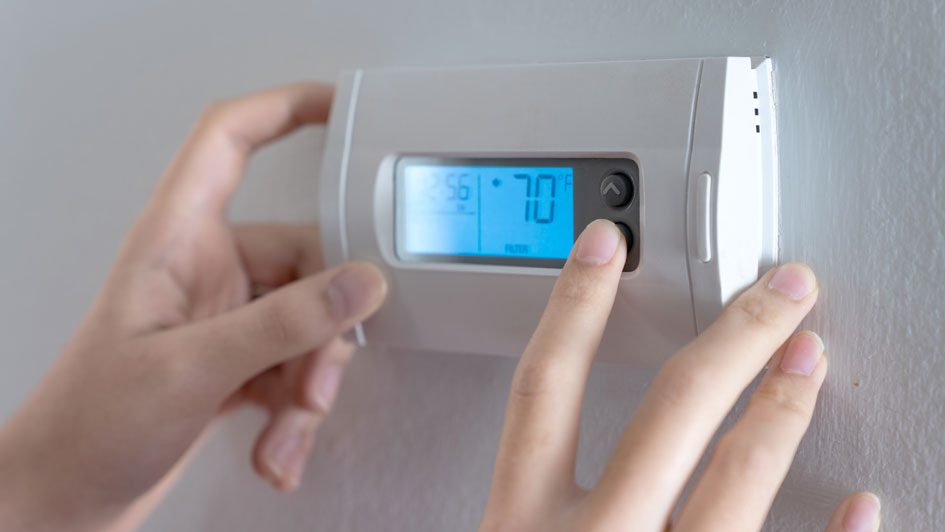
Everyone’s always looking to save money on their utility bills, but you should know there’s a way to keep costs down, even when you're out of the house.
The secret is your thermostat. By learning more about its special features and settings, you can tailor the temperature to your needs. You can create a number of automated temperature settings for when you’re home, away or even when you’re sleeping.
By trying a few of these schedules, you have more time to enjoy pleasant temperatures while cutting down your energy bills. Take a look at a few ways your thermostat doesn't have to use up all your summer spending money:
While at Home
When you’re home, you want to enjoy a comfortable temperature. That’s why it’s best to set your thermostat lower in the summer if you're indoors to make the most of the cool air.
But the most energy-efficient temperatures for when you're in your home during the summer is in fact anywhere between 78 and 80 degrees Fahrenheit. This way, you'll avoid the worst of summer while keeping your energy bill more manageable.
While Gone
When it comes to setting the temperature for a vacation or other trip away from the house, it’s advantageous to set the thermostat higher than you would if you were in the house.
If your home is located somewhere a little cooler, you can set the thermostat to higher temperatures like 88 degrees while no one is home and then lower it back to the sweet spot of 78-80 degrees once you're home again. This way, your air conditioning system isn't working around the clock to cool an empty house.
While Sleeping
To enjoy a good night's sleep during the summer, you want a nice cool temperature. You should try and keep things between 68-72 degrees Fahrenheit. This will keep you from getting too hot or too cold when you are trying to get some rest.
Other Ways to Use Less Energy:
- Install a smart thermostat: Trying a smart thermostat in the summer is an excellent way to reduce energy costs by automatically adjusting to your lifestyle and personal preferences. A smart thermostat manages the temperature if you are home or sleeping, while allowing it to get warmer when no one is around. Using reputed brands and models such as the Lennox iComfort, you are able to adjust settings and schedules through your smartphone, tablet or laptop. Planning smart thermostat installation in your Hasbrouck Heights home can be the simplest strategy for maintaining comfortable, yet energy-efficient temperatures no matter where you are.
- Update your existing HVAC system: Upgrading your HVAC system can save money in the long run. By investing in a more energy-efficient system, you can also count on lower utility bills since more efficient equipment requires less energy to heat and cool your home. Air conditioning installation in Hasbrouck Heights is only a phone call away, so don't hesitate to reach out to local pros like ACE Solutions who can set you up for success.
- Keep up with AC maintenance: Hiring a skilled professional to perform regular air conditioning maintenance in Hasbrouck Heights can have a serious effect on your total monthly energy use. By regularly cleaning the coils, checking for damage and keeping vents clear of dust and debris, this can help your HVAC system perform better during day-to-day use.. Higher energy efficiency will also reduce strain on important or delicate components and lowers operational costs, resulting in lower energy usage and subsequently, smaller bills.
- Replace your air filter regularly: Cleaning or replacing the air filter regularly saves money by improving airflow. When filters are old and less effective, air conditioners have to work harder, and this greater strain could shorten the system’s life span and cause breakdowns.
- Check your attic insulation: Insulation is a vital part of maintaining an energy-efficient home, keeping the hot air outside and the cool air inside over the summer. The North American Insulation Manufacturers Association (NAIMA) suggests that homeowners living in southern climates should install at least 13-14 inches of insulation, while states further north need 16-18 inches.
- Check your ventilation: A leak in the air ducts could increase your energy bills much more than 20 percent, plus it can also lead to problems with your water heater, clothes dryer and other appliances to get into the atmosphere of your home. Watching for signs of leaks and sealing them can help with both these issues.
- Seal all other leaky spots in your home: Sealing up other leaks in your home with caulk, foam sealant or weather-stripping keeps temperatures a little cooler on hot summer days. You should also check for any gaps around windows, doors and even outdoor fixtures. Devoting time and effort to sealing leaks now can help you save a lot in the long run.
